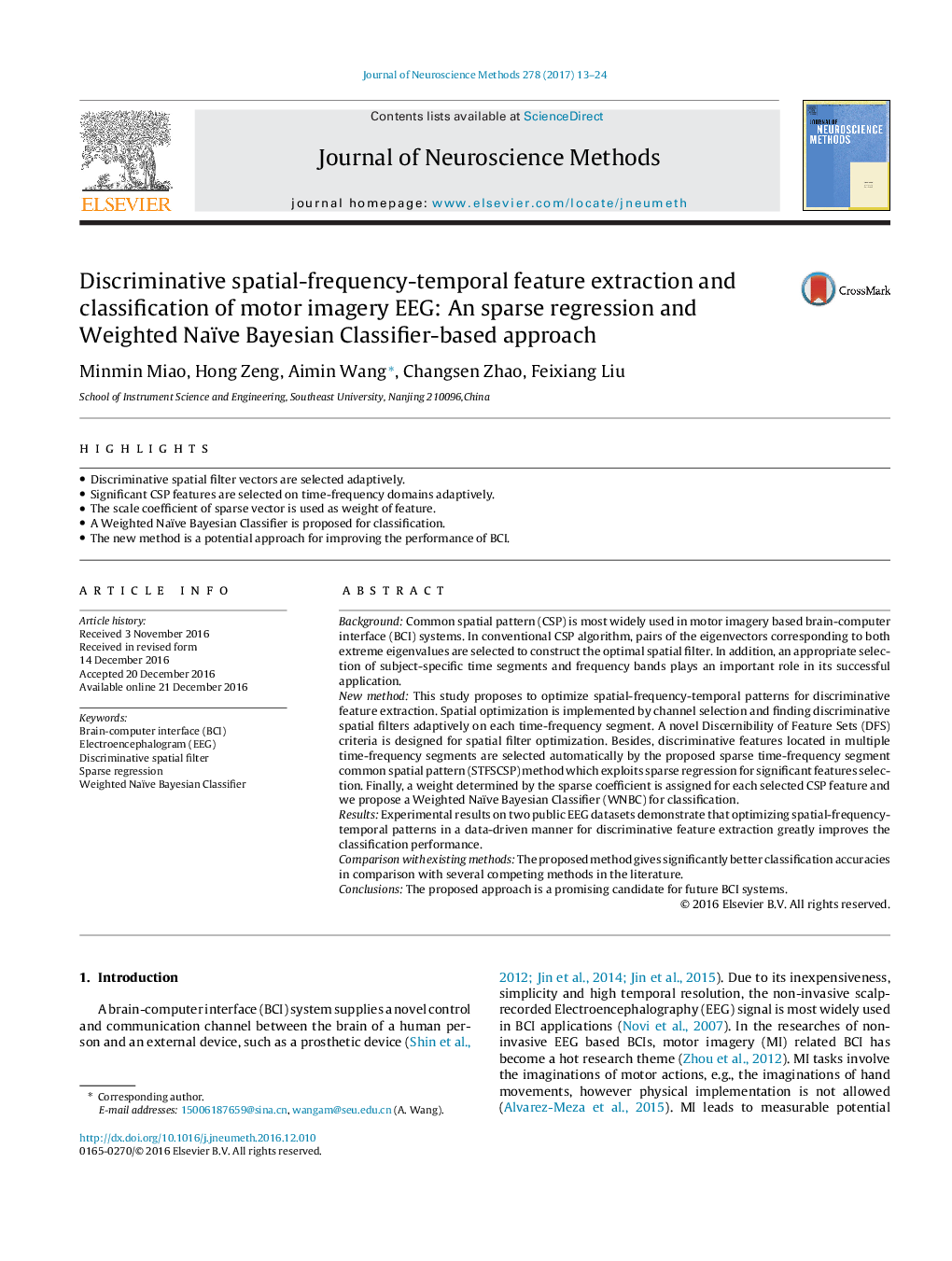| کد مقاله | کد نشریه | سال انتشار | مقاله انگلیسی | نسخه تمام متن |
|---|---|---|---|---|
| 5737320 | 1614591 | 2017 | 12 صفحه PDF | دانلود رایگان |

- Discriminative spatial filter vectors are selected adaptively.
- Significant CSP features are selected on time-frequency domains adaptively.
- The scale coefficient of sparse vector is used as weight of feature.
- A Weighted Naïve Bayesian Classifier is proposed for classification.
- The new method is a potential approach for improving the performance of BCI.
BackgroundCommon spatial pattern (CSP) is most widely used in motor imagery based brain-computer interface (BCI) systems. In conventional CSP algorithm, pairs of the eigenvectors corresponding to both extreme eigenvalues are selected to construct the optimal spatial filter. In addition, an appropriate selection of subject-specific time segments and frequency bands plays an important role in its successful application.New methodThis study proposes to optimize spatial-frequency-temporal patterns for discriminative feature extraction. Spatial optimization is implemented by channel selection and finding discriminative spatial filters adaptively on each time-frequency segment. A novel Discernibility of Feature Sets (DFS) criteria is designed for spatial filter optimization. Besides, discriminative features located in multiple time-frequency segments are selected automatically by the proposed sparse time-frequency segment common spatial pattern (STFSCSP) method which exploits sparse regression for significant features selection. Finally, a weight determined by the sparse coefficient is assigned for each selected CSP feature and we propose a Weighted Naïve Bayesian Classifier (WNBC) for classification.ResultsExperimental results on two public EEG datasets demonstrate that optimizing spatial-frequency-temporal patterns in a data-driven manner for discriminative feature extraction greatly improves the classification performance.Comparison with existing methodsThe proposed method gives significantly better classification accuracies in comparison with several competing methods in the literature.ConclusionsThe proposed approach is a promising candidate for future BCI systems.
Journal: Journal of Neuroscience Methods - Volume 278, 15 February 2017, Pages 13-24